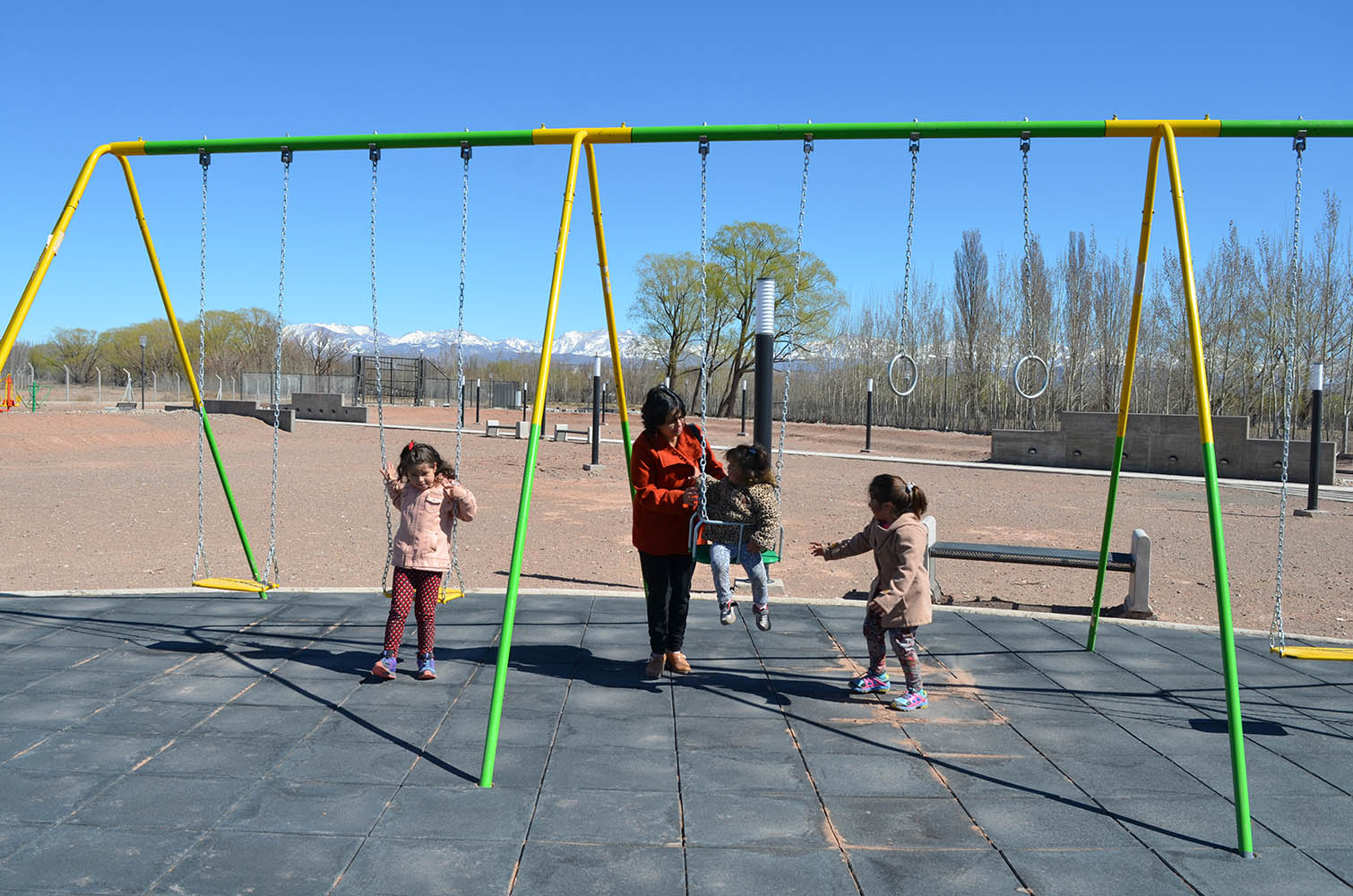
If you would like to learn more about the IAEA’s work, sign up for our weekly updates containing our most important news, multimedia and more.
Moving Forward: Repurposing Nuclear Facilities After Decommissioning
Anastasiia Andriushina

Children playing at Parque El Mirador on the park’s opening day. (Photo: CNEA)
By 2050, a significant number of the more than 400 nuclear power reactors currently in operation may be decommissioned. Decommissioning represents not just an end of the facility’s use, but the beginning of a multifaceted technical, socioeconomic and environmental transformation. Successful decommissioning is therefore not only about dismantling nuclear facilities but about rethinking their future use for the local community’s benefit.
“Repurposing nuclear sites requires a shift in mindset,” said Gloria Kwong, Head of the IAEA’s Decommissioning and Environmental Remediation Section. “By prioritizing future use, resource efficiency and redevelopment, former nuclear sites can be transformed into hubs of innovation, economic growth and sustainability, supporting clean energy and resilient communities.”
In Argentina, for instance, the decommissioning and remediation of the Malargüe industrial complex in Mendoza Province — which was used for uranium mineral processing for over three decades before closing in 1986 — gave rise to Parque El Mirador, a green space developed with and for the local community. Launched in 2017 as part of the Malargüe Strategic Plan 2020 and led by the National Atomic Energy Commission (CNEA), this project exemplifies how inclusive planning can lead to lasting transformation. Co-designed by citizens, civil society organizations and the municipality, the park features recreational areas, sports facilities and spaces for environmental education.
“This project stands as a milestone for Argentina, successfully integrating social development, economic growth and environmental responsibility,” said Juan Leandro Ferrer, CNEA’s institutional relations manager. “Its success reflects a strong stakeholder engagement policy, involving provincial and local governments, regulatory bodies, educational institutions and civil society organizations. Additionally, we must underline the $30 million loan provided by the International Bank for Reconstruction and Development, which highlights the strategic role multilateral credit agencies can play in supporting high impact nuclear projects.”
Such a future-oriented approach requires comprehensive stakeholder engagement at the very early stages of a nuclear facility’s life cycle, even before the operational phase begins.
According to the IAEA’s guidebook on stakeholder engagement, various stakeholders — including operators, regulators, host communities, workers and environmental organizations — have their own unique perspectives and concerns, which should be heard, balanced and taken into account in the decision making process. However, effectively addressing and integrating these diverse views can be complicated.
The highly technical nature of the decommissioning process can be challenging for the public to understand, resulting in concerns about transparency and accountability, according to Kwong. She stressed that prioritizing clear communication when discussing safety measures, clean-up criteria and long term site monitoring plans can build trust and foster greater public understanding. In the end, the success of decommissioning and repurposing depends on public confidence, and a lack of trust or awareness can lead to opposition and delays.
Public confidence influences community decisions on clean-up standards. Although regulatory bodies set basic requirements, the community may call for higher clean-up standards. Despite higher costs, the community may wish to bring the site to ‘greenfield’ status for unrestricted use to eliminate risks and any stigma associated with the former nuclear facility. Conversely, some stakeholders may support a partial clean-up if it allows for industrial or commercial redevelopment, and may accept controlled contamination if exposure risks are minimized through restrictions and monitoring, allowing for a faster transition to new use.
These decisions should be guided by the local community, which bears the main burden associated with the transition. Nuclear facilities tend to be drivers of regional employment and economic development, so their closure can result in severe job losses and even economic recession if poorly managed. This underscores the importance of a future-oriented strategy and community involvement to mitigate negative socioeconomic effects.
At the United Kingdom’s Dounreay nuclear site, for example, where decommissioning is ongoing, the risks of economic displacement were recognized and addressed early in the decommissioning process. Site planners implemented comprehensive workforce transition strategies, including retraining and redeployment programmes, to support affected personnel. This helped workers shift into emerging sectors and stabilized the local economy during a period of uncertainty, preserving both jobs and community resilience.
Repurposing decommissioned nuclear sites, for example into small modular reactors, or redeveloping them for industrial, scientific, recreational or community purposes, can boost local economies and create long term benefits. To succeed, these undertakings should reflect local needs and preferences and include input from the private sector, educational institutions and community members. Such collaboration ensures that redevelopment efforts are grounded in reality and pave the way for future growth. Collaboration can facilitate a smooth, cost-effective transition, attract investment and maximize community benefits.
Nonetheless, technical complexity, conflicting priorities, miscommunication and economic constraints can make stakeholder engagement challenging. Embedding good practices into stakeholder engagement strategy could mitigate these challenges. Simple, non-technical explanations can significantly improve public understanding, while responsiveness to stakeholder feedback, even when full agreement cannot be achieved, builds trust. Likewise, economic transition planning can substantially mitigate negative socioeconomic impacts.
Ultimately, if nuclear decommissioning is considered an opportunity for community renewal rather than simply the end of a facility’s operational life, it can become a catalyst for sustainable regional development and community resilience. “Continuous stakeholder engagement ensures that diverse perspectives are heard, contributes to informed decisions about the safe repurposing of sites, and helps to secure lasting economic, social and environmental benefits for generations to come,” said Anna Clark, Head of the IAEA’s Waste and Environmental Safety Section.

